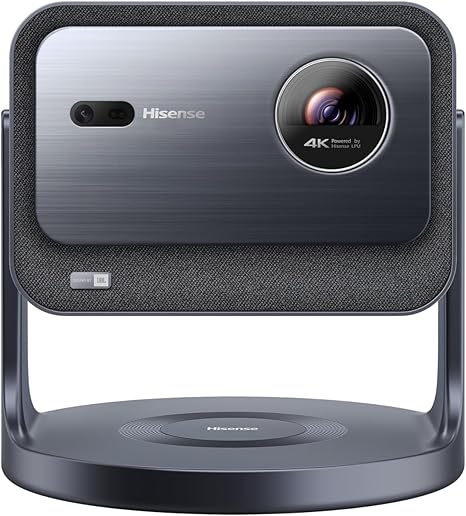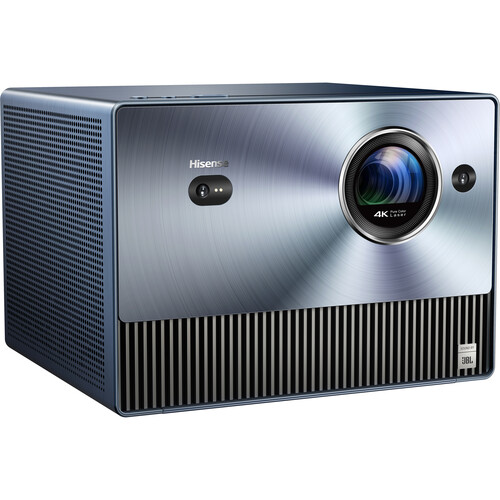Today, we’re putting two premium portable projectors from Hisense to the test—the brand-new C2 versus the two-year-old C1. With key differences in brightness, color processing, and smart features, is the C2 worth the upgrade, or does the C1 still hold its ground? We ran real-world tests in different lighting conditions, gaming scenarios, and everyday use to find out—no marketing hype, just real results. Let’s see which one comes out on top!

In This Comparison:
Hisense C2 vs. C1: Specifications
Before diving into the performance comparison, let’s take a look at the specs table to see how the Hisense C2 and C1 stack up on paper. Some key differences stand out right away—for example, the C2 boasts higher brightness at 2,000 ANSI lumens compared to the C1’s 1,600 lumens, and it features 10-bit color processing versus the C1’s 8-bit. The C2 also comes with a more modern design and includes a swivel stand for added flexibility. However, specs don’t always tell the full story, so let’s see how both projectors perform in real-world testing.
Image Quality

In our image quality test, we evaluated both projectors in both dark and daylight conditions. The Hisense C2, with its 2,000 ANSI lumens, produced a noticeably brighter image compared to the C1’s 1,600 lumens. In a dark room, both projectors delivered sharp and detailed 4K images, but in a well-lit environment, the C2 maintained better visibility, making it the more versatile option for daytime viewing.
Contrast performance also differed. While manufacturers often advertise dynamic contrast ratios, we measured the native contrast of each projector for a more accurate comparison. The Hisense C2 achieved a native contrast of 1,700:1, while the C1 measured slightly lower at 1,500:1. In practice, this meant the C2 delivered slightly deeper blacks and better shadow detail, though both projectors struggled with very dark scenes. The C2 also benefited from its 10-bit color processing, producing smoother gradients and more accurate tones.

Throw distance and screen size flexibility were another area of comparison. The C1 supports an image size from 65 to 300 inches with a 1.20:1 throw ratio, while the C2’s throw ratio was nearly identical in our tests. This meant both projectors required similar placement distances to achieve the same screen size. However, the C2 introduced a key advantage with its built-in swivel stand, allowing 360° horizontal and 180° vertical adjustments. This made it much easier to fine-tune the projection angle or even project onto a ceiling without additional mounting equipment. Since neither model includes lens shift, precise positioning was still necessary, but the C2’s flexible design made setup more convenient. Overall, the C2’s brightness and adjustability gave it an edge in varied lighting conditions.
Winner: Hisense C2
Gaming and Sound

For gaming, we tested both projectors with fast-paced titles to evaluate input lag and overall responsiveness. The Hisense C2 measured an input lag of 12ms, while the C1 came in at 17ms. While these numbers are acceptable for casual gaming, they fall short of the ultra-low latency required for competitive play. In our experience, both projectors handled single-player and slower-paced games well, but slight input delay was noticeable in fast reflex-based games.

When it comes to sound, both projectors feature built-in stereo speakers with 10W output per channel. The C1, however, has the advantage of JBL Audio Solution with Dolby Atmos support, delivering a slightly richer and more immersive soundstage. In direct comparison, the C2’s audio was clear but lacked some of the depth and bass response found in the C1. While either projector is fine for casual viewing, we’d recommend an external sound system for a more cinematic experience.
Winner: Hisense C2
Smart Features
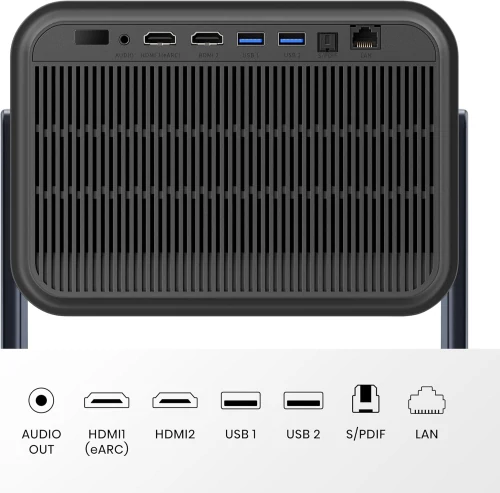
When testing the smart features, we found both projectors to be well-equipped with built-in streaming apps, voice control via Amazon Alexa, and auto-focus for easy setup. The Hisense C2, however, offered a more refined user experience with a smoother interface and quicker app loading times. Navigating menus felt more responsive compared to the C1, which occasionally showed slight delays when switching between apps.
One notable difference was the geometric correction and auto-keystone capabilities. The C2 includes Seamless Auto Keystone Correction and Smart Object Avoidance, which adjusted the image more precisely when we placed the projector at an angle or near obstacles. The C1, lacking these advanced features, required more manual fine-tuning to achieve a properly aligned image.
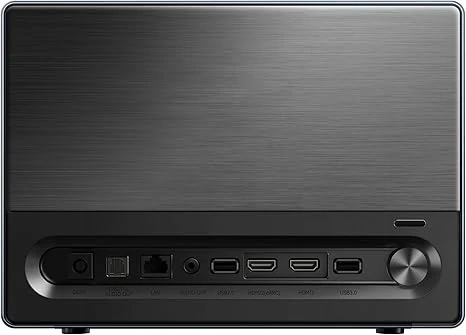
Both projectors support Dolby Vision HDR, enhancing content quality on compatible streaming platforms. However, we noticed that the C2 handled HDR content with slightly better color accuracy, likely due to its 10-bit processing. Overall, while both projectors provide a solid smart TV experience, the C2 felt more polished with better automatic adjustments and smoother operation.
Winner: Hisense C2
OVERVIEWS:
Hisense C2
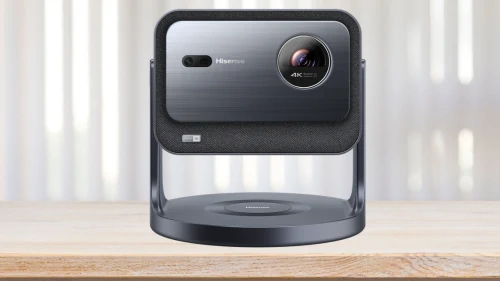 The Hisense C2 is the latest addition to the company’s portable projector lineup, offering a brighter 4K image and upgraded features over its predecessor. It uses a triple RGB laser light source with 10-bit color processing and includes modern conveniences like a 360° swivel stand, auto keystone correction, and smart object avoidance. Its design is more compact and stylish, and it handles both dark and bright environments with ease.
The Hisense C2 is the latest addition to the company’s portable projector lineup, offering a brighter 4K image and upgraded features over its predecessor. It uses a triple RGB laser light source with 10-bit color processing and includes modern conveniences like a 360° swivel stand, auto keystone correction, and smart object avoidance. Its design is more compact and stylish, and it handles both dark and bright environments with ease.
Pros
- Brighter image (2,000 ANSI lumens)
- True 10-bit color for smoother gradients
- Modern design with adjustable swivel stand
- Fast auto keystone and object avoidance
- Lower input lag (12ms) for casual gaming
Cons
- Slightly weaker built-in audio compared to C1
- No lens shift
- Around $200 more expensive than the C1
Hisense C1
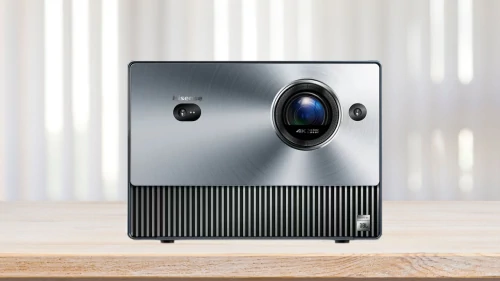 The Hisense C1, released two years prior, remains a capable 4K projector with a solid feature set. It features a TriChroma laser engine, decent brightness, and strong built-in audio powered by JBL with Dolby Atmos support. While it lacks some of the newer automation features of the C2, it still performs well in controlled lighting environments and offers a wide image size range.
The Hisense C1, released two years prior, remains a capable 4K projector with a solid feature set. It features a TriChroma laser engine, decent brightness, and strong built-in audio powered by JBL with Dolby Atmos support. While it lacks some of the newer automation features of the C2, it still performs well in controlled lighting environments and offers a wide image size range.
Pros
- Great audio with JBL tuning and Dolby Atmos
- Large adjustable image size (65″–300″)
- Solid performance in dark room conditions
- Slightly more affordable
Cons
- Lower brightness (1,600 ANSI lumens)
- 8-bit color processing
- No auto keystone or object avoidance
Verdict
In our testing, the Hisense C2 emerged as the clear winner in this comparison. With its higher brightness, better native contrast, and 10-bit color processing, it delivers a more vibrant and detailed image, especially in brighter environments. The C2 also features a more modern design with a built-in swivel stand, making setup far more convenient compared to the C1. >>>> Check the current price now Additionally, its lower input lag gives it a slight edge for gaming, while smart features like Auto Keystone Correction and Smart Object Avoidance make everyday use much easier.
Although the C1 still holds up with decent contrast and slightly better built-in audio, the improvements offered by the C2 justify the approximately $200 price difference. The added brightness alone makes a significant impact, ensuring a better viewing experience in various lighting conditions. Combined with its improved usability and image processing, the C2 offers better overall value, making it the smarter choice for those looking for a premium portable projector.
